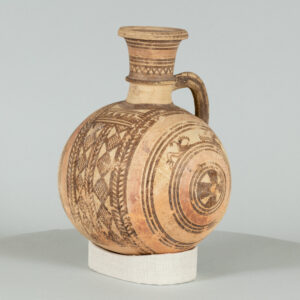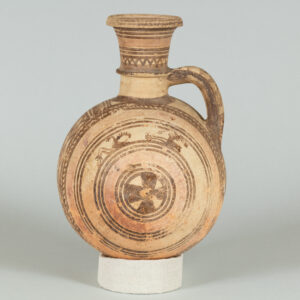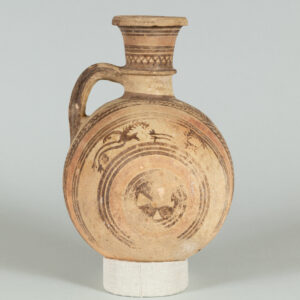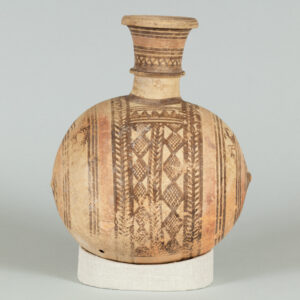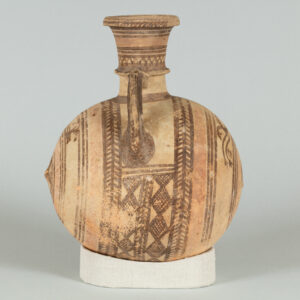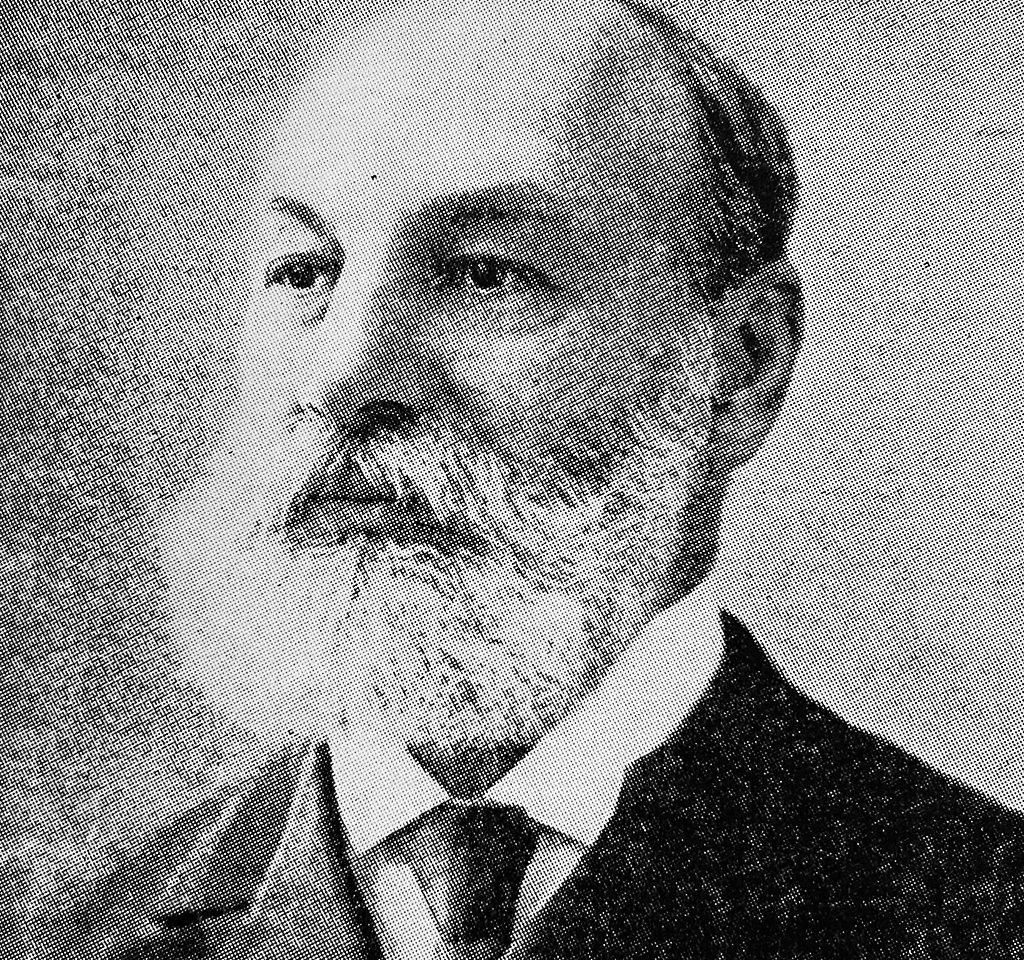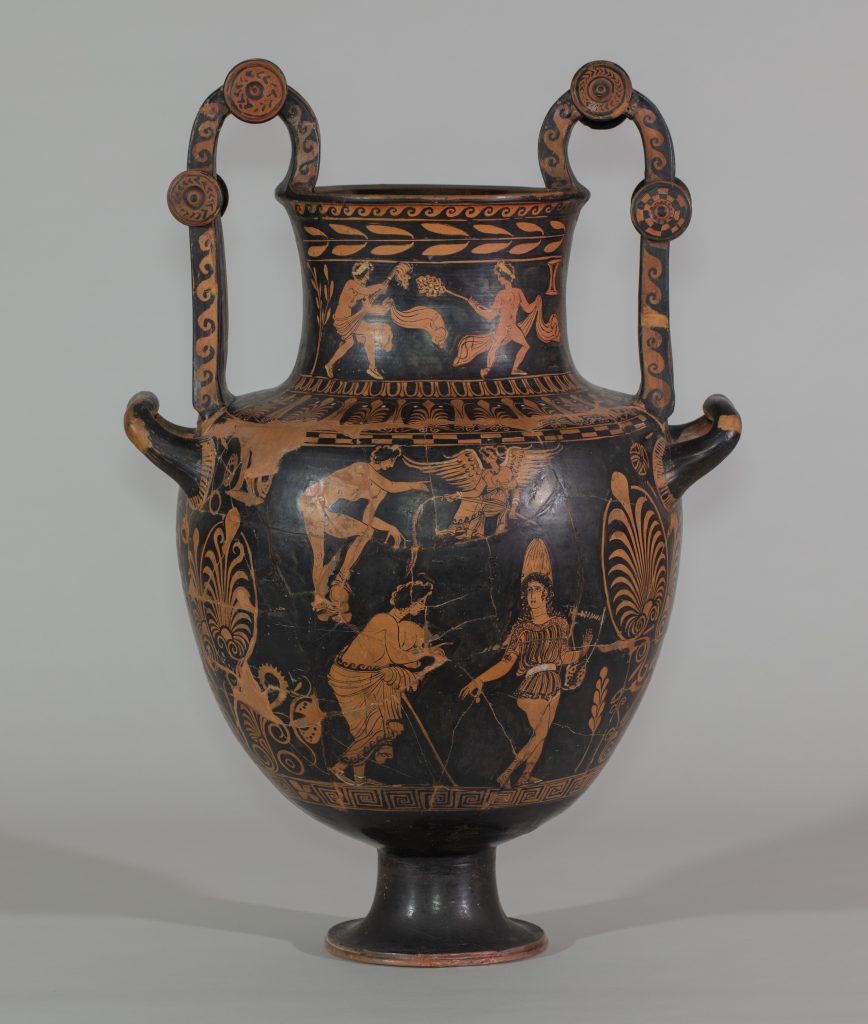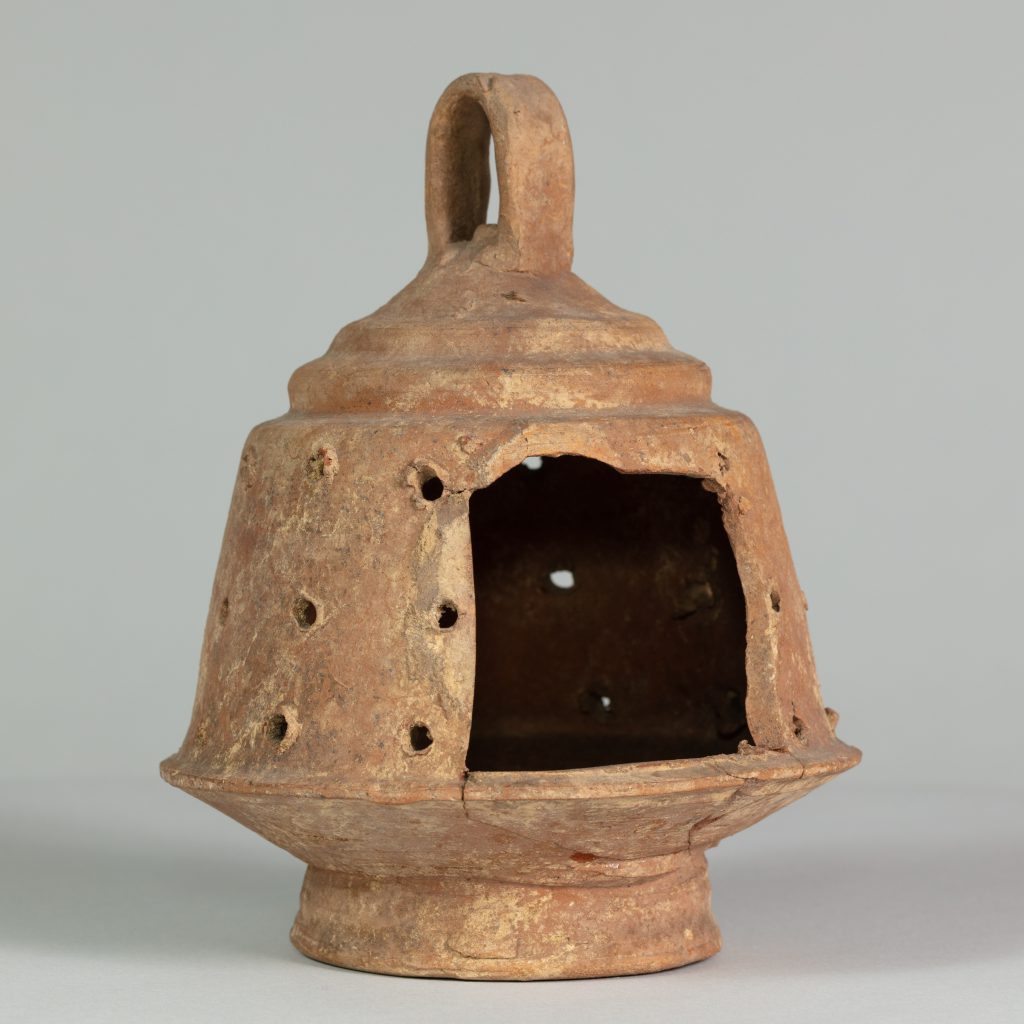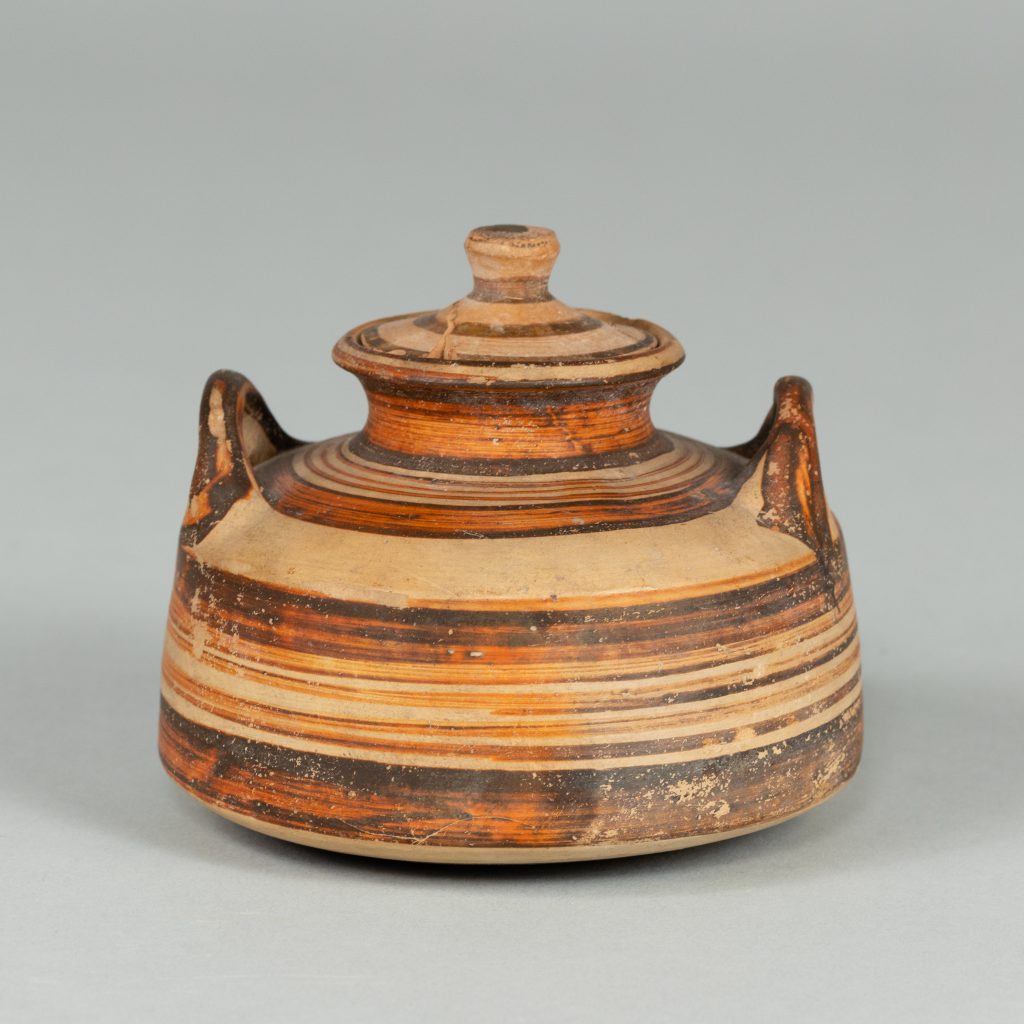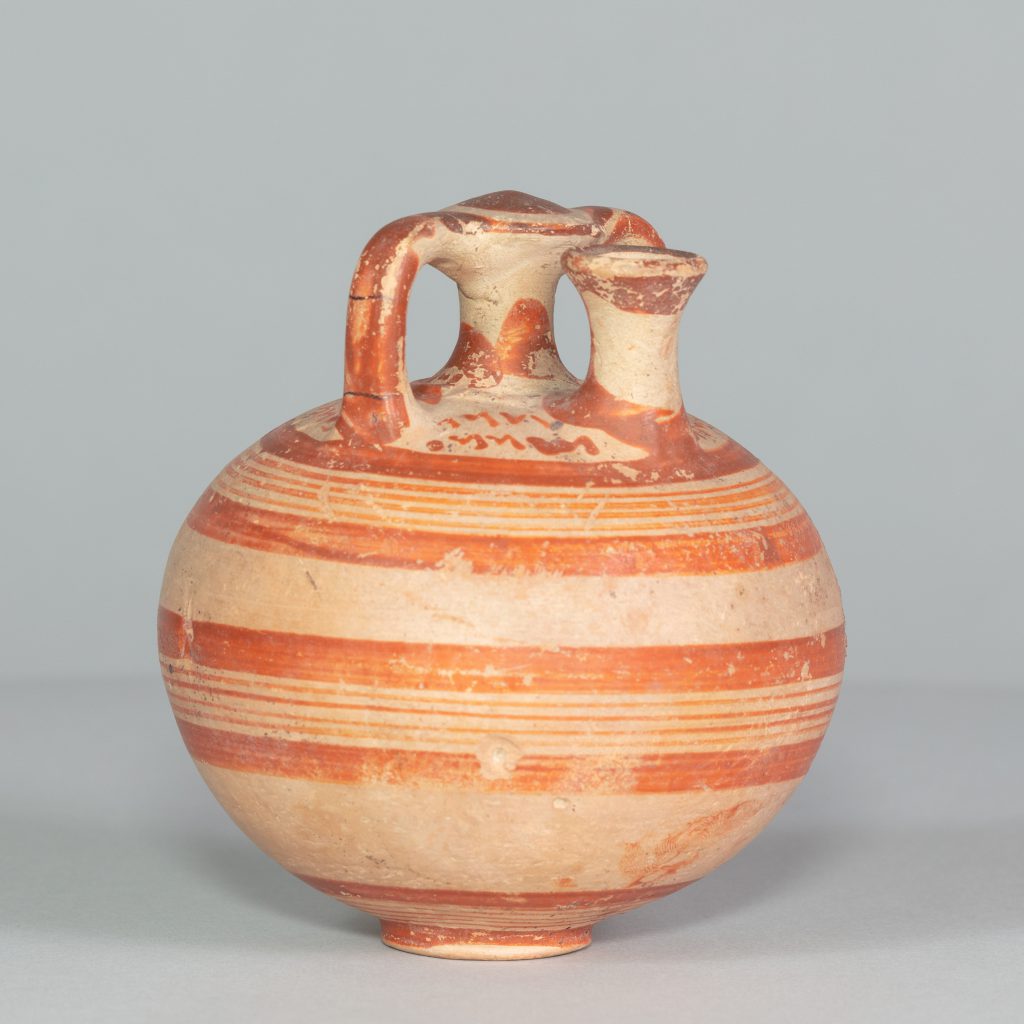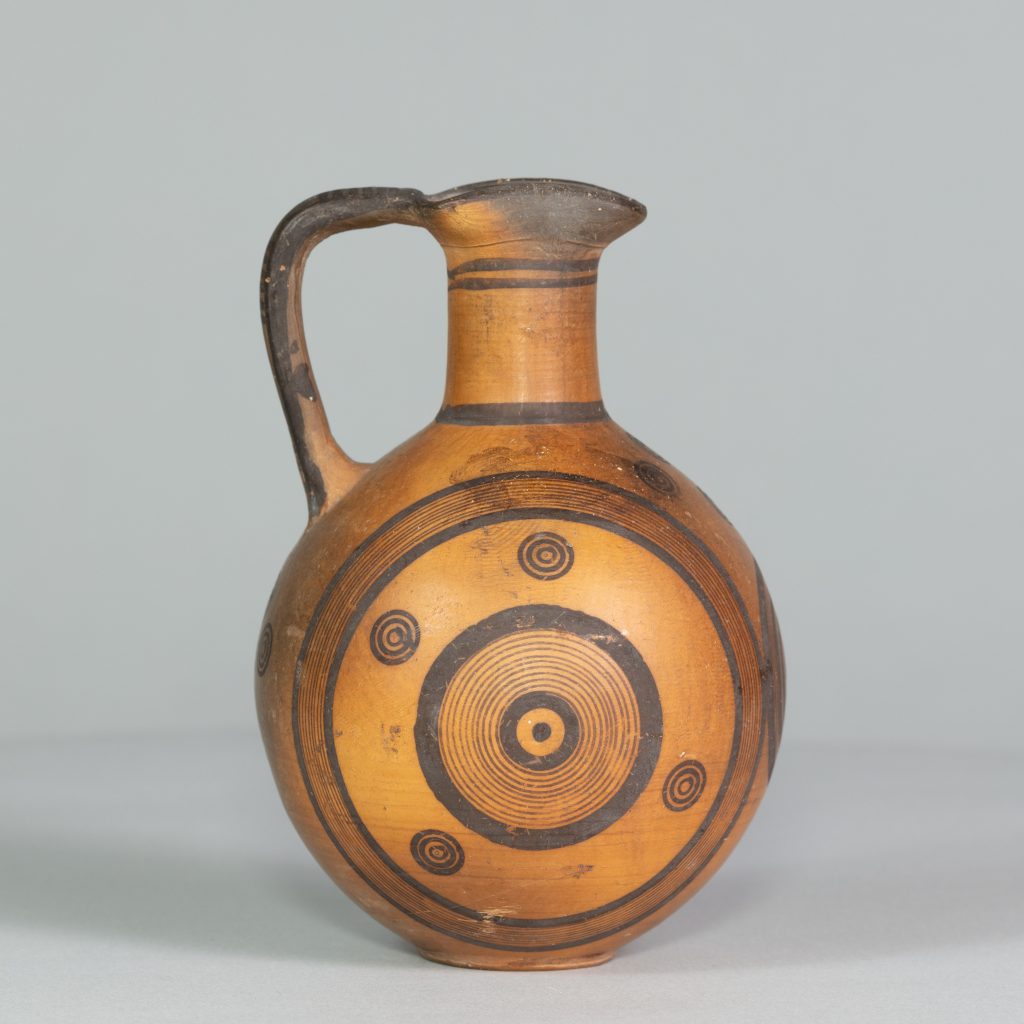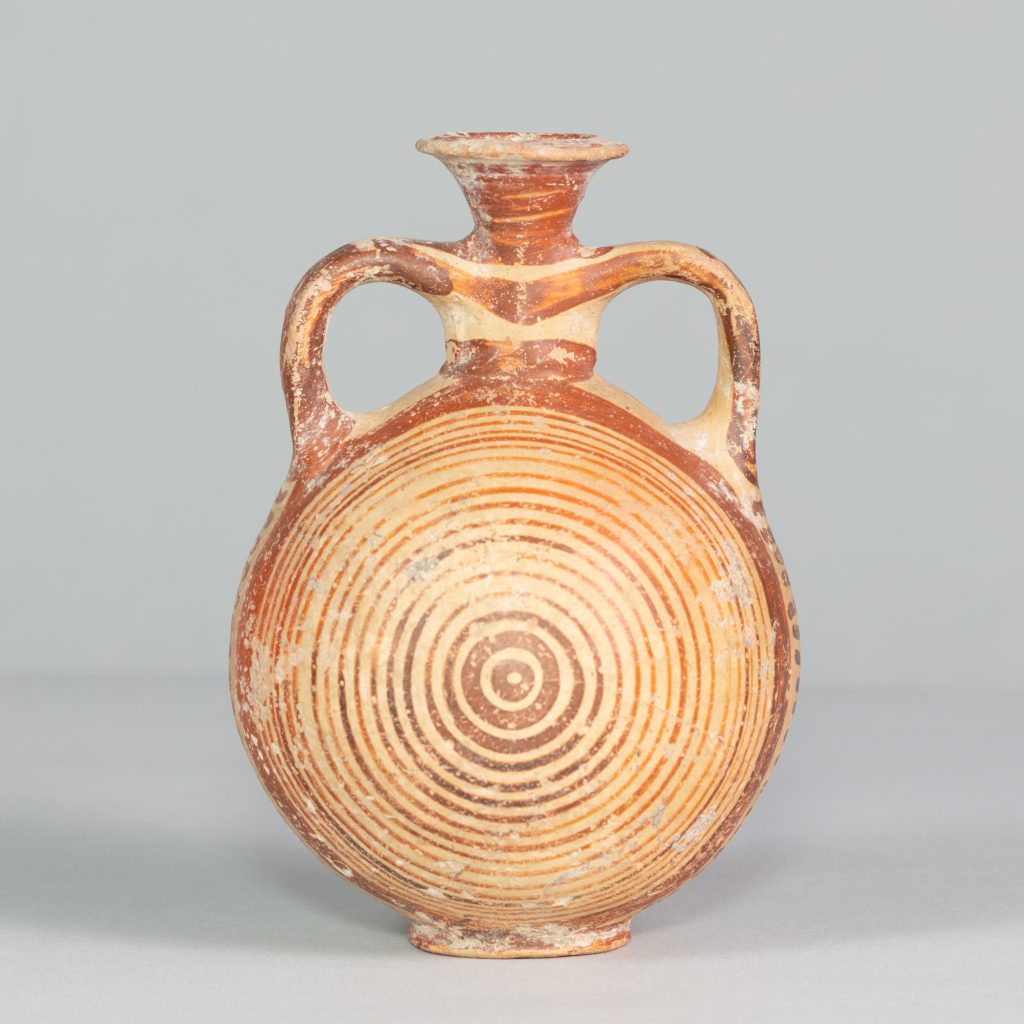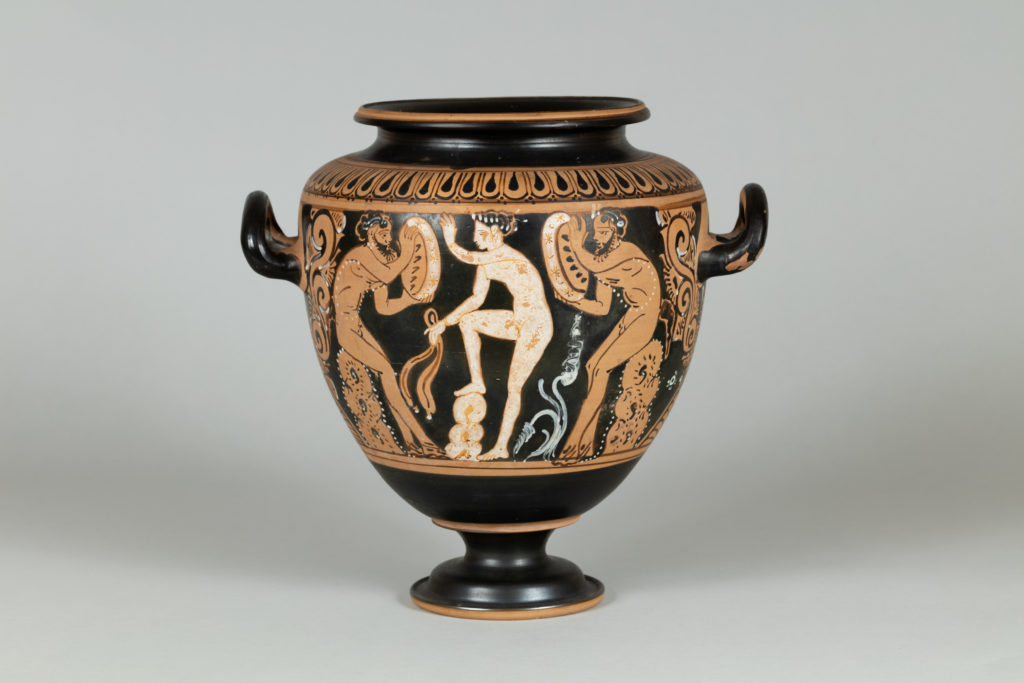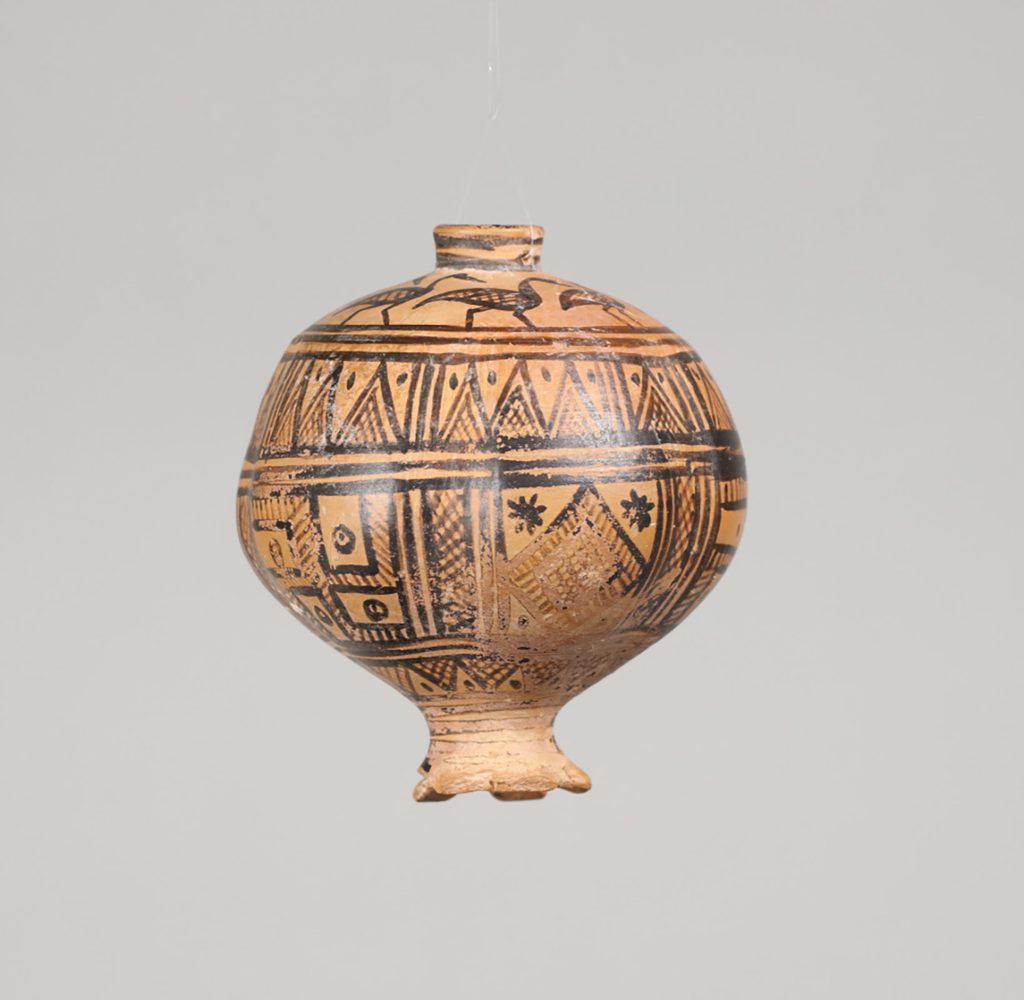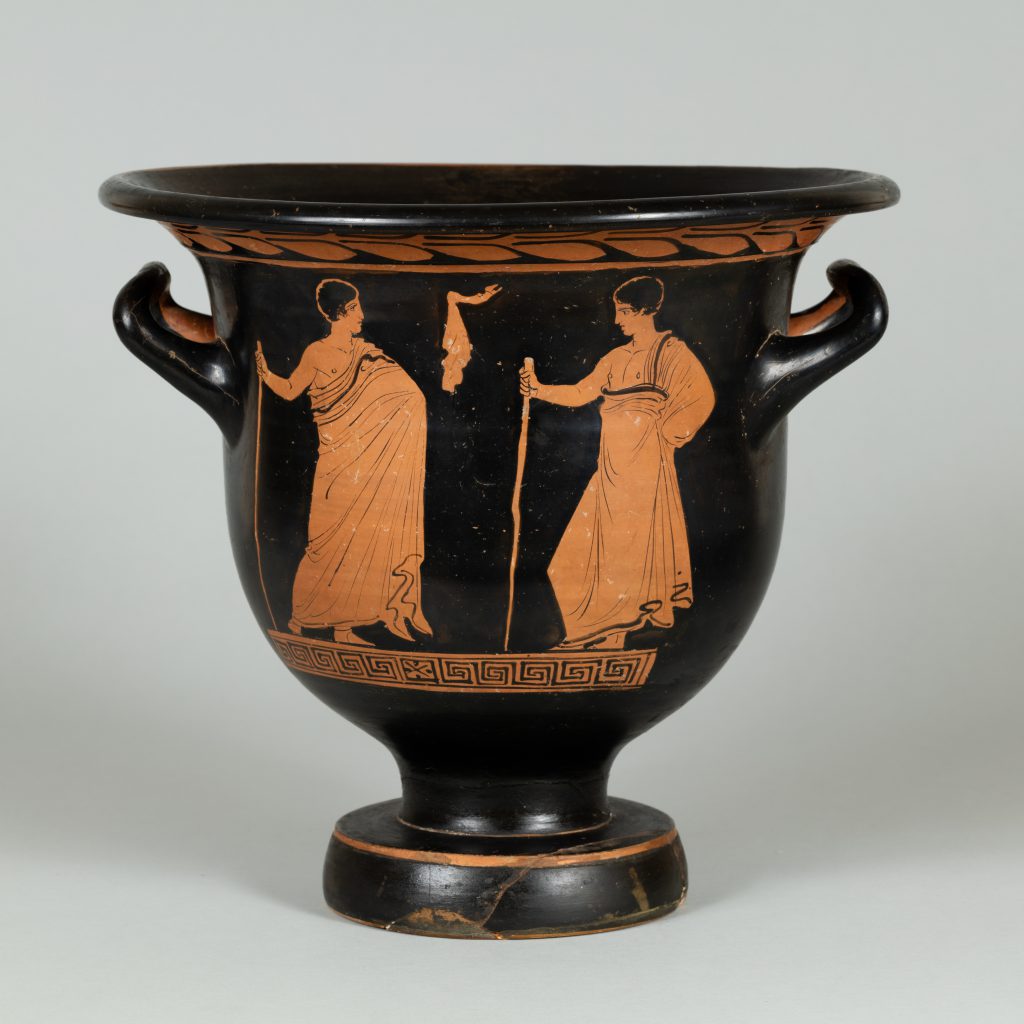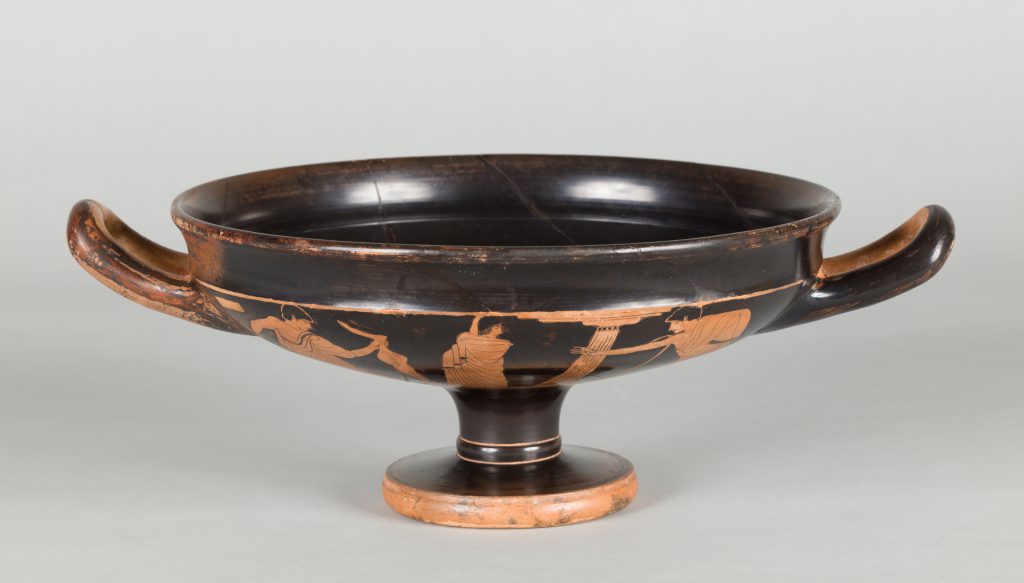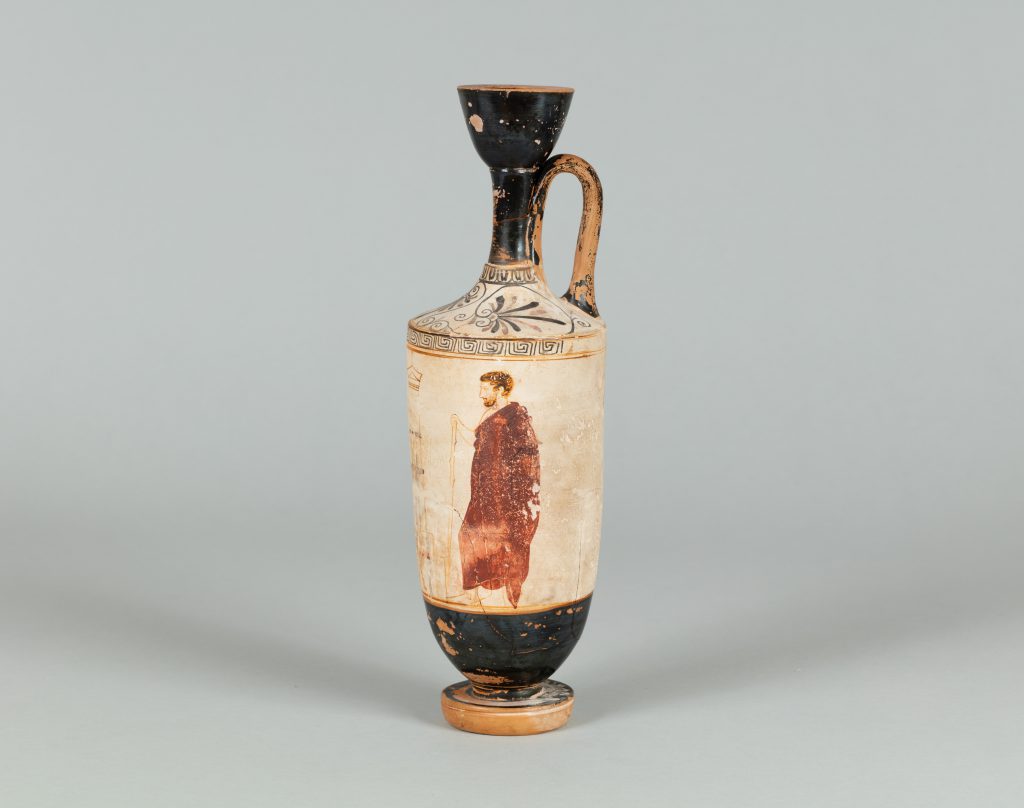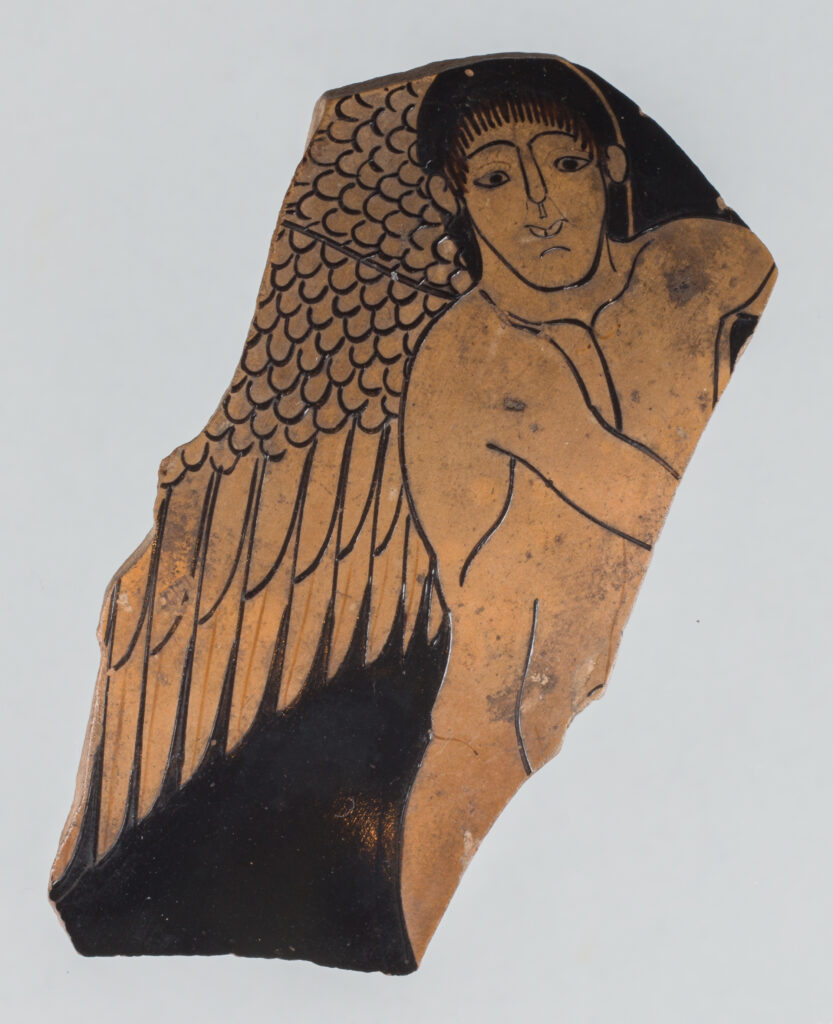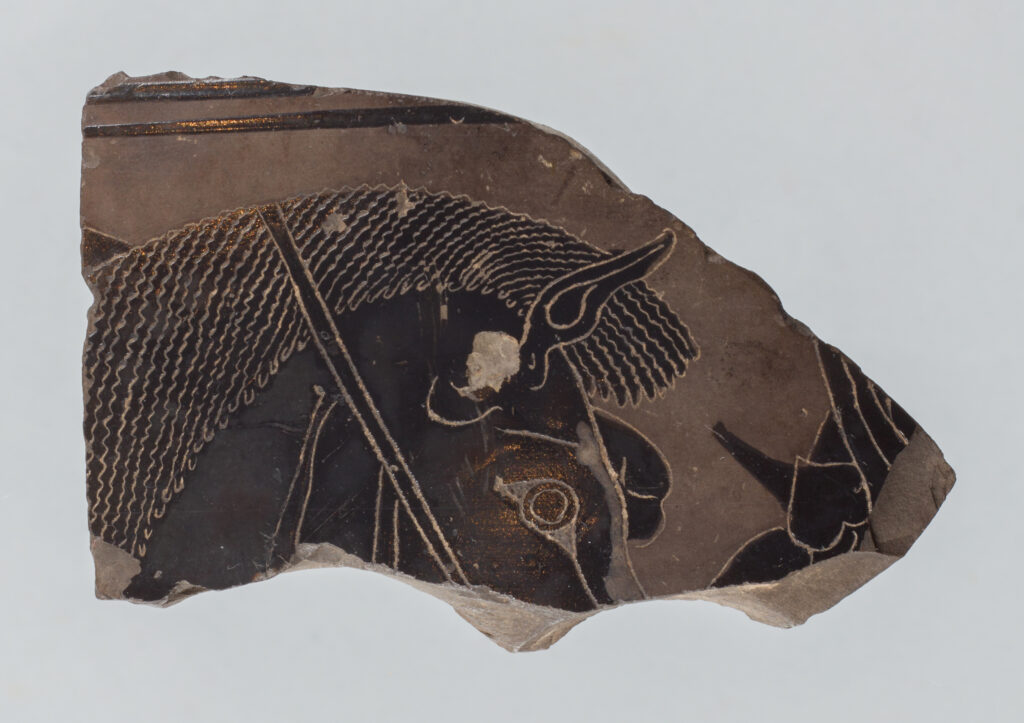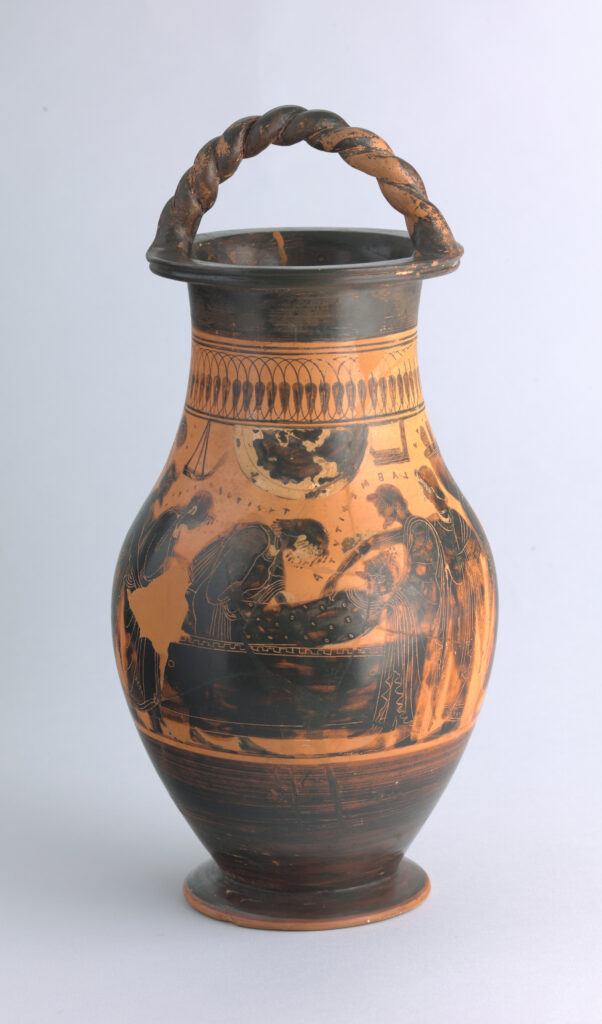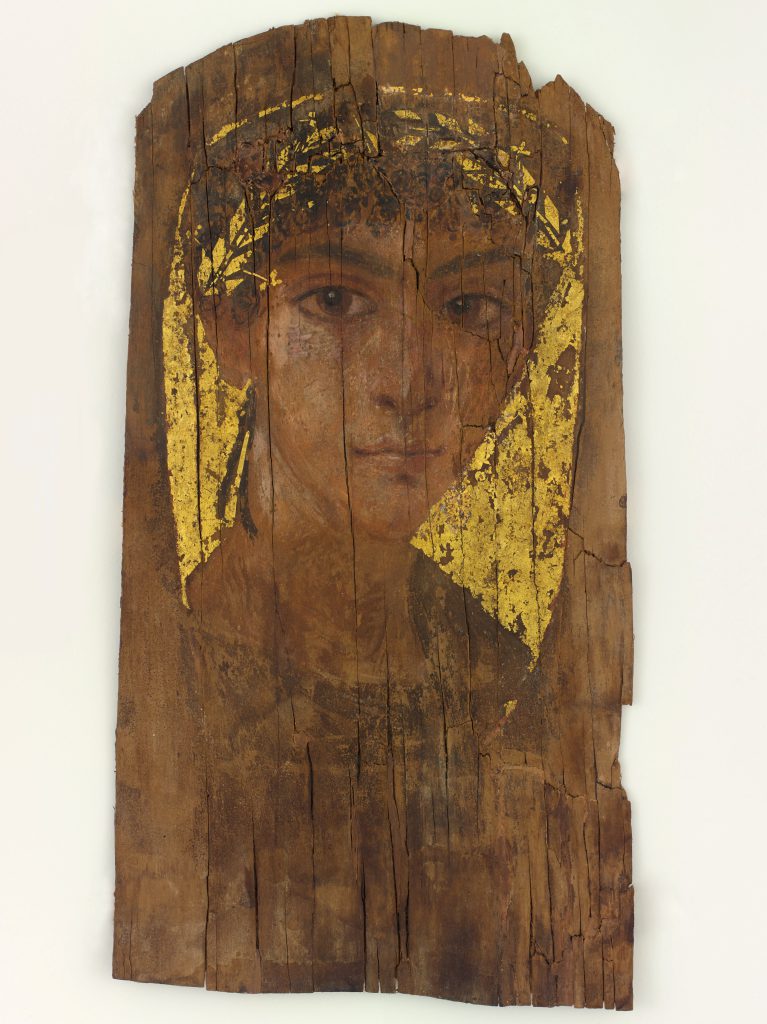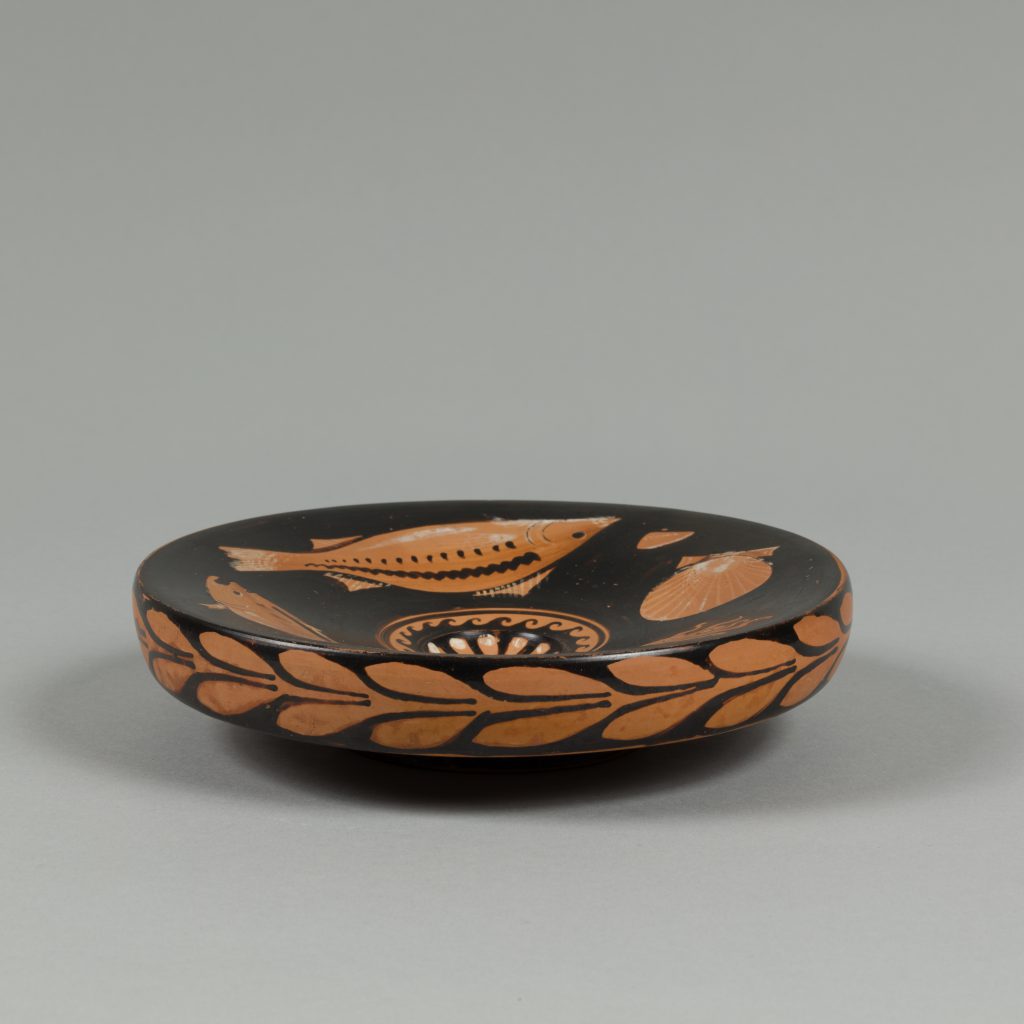

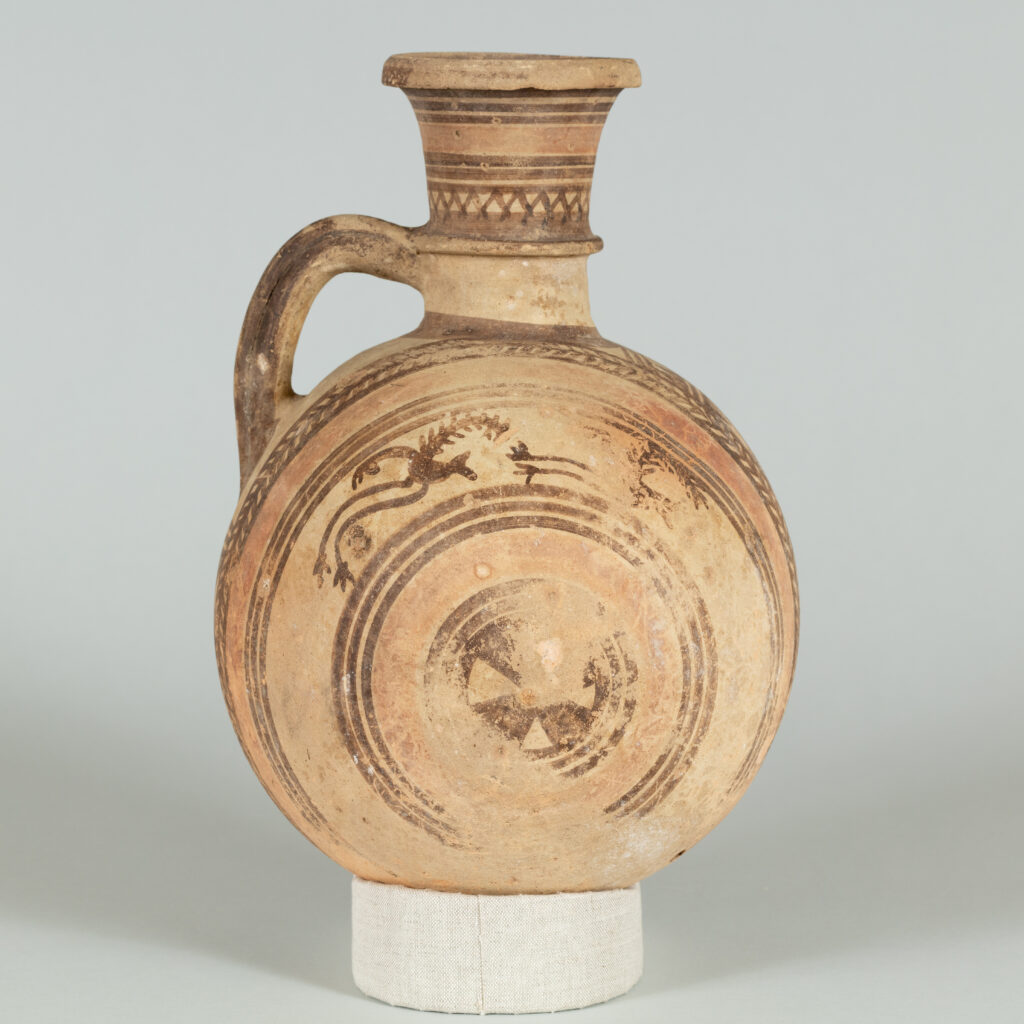
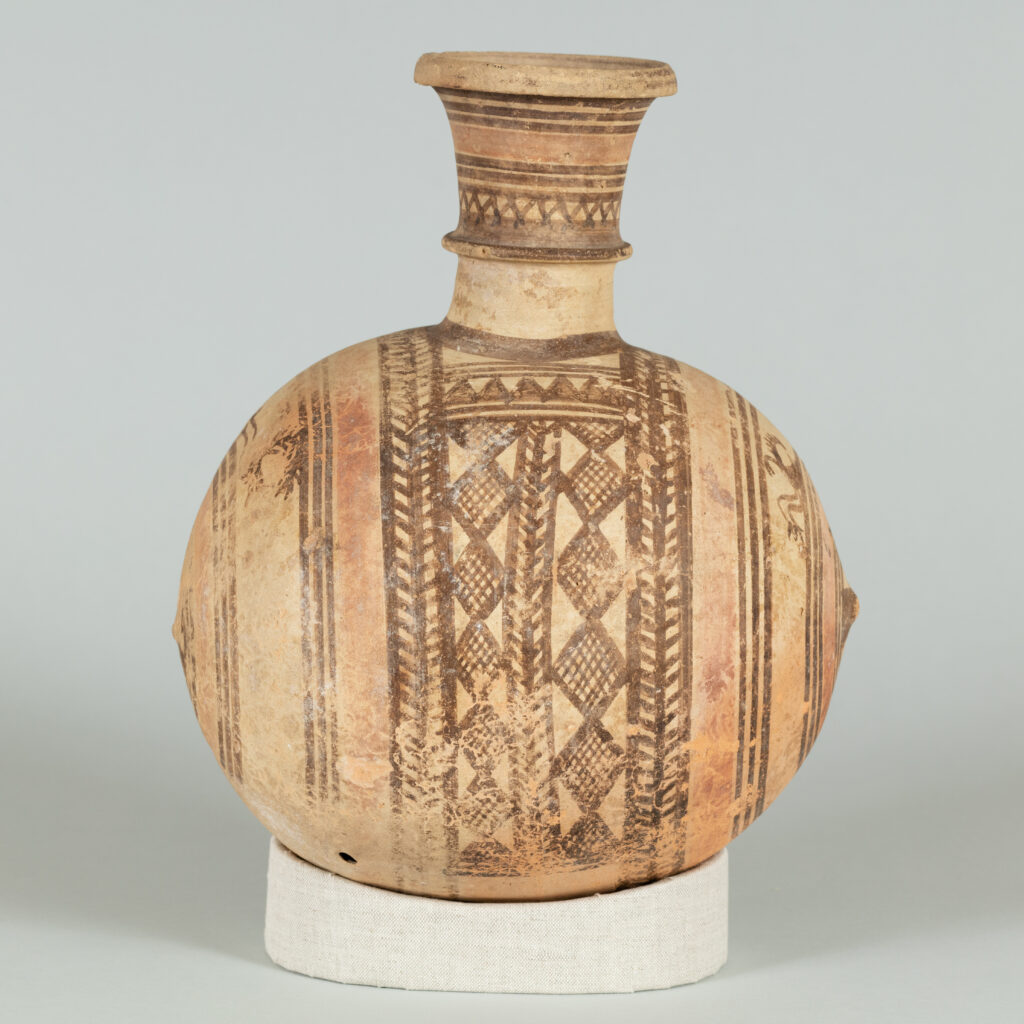

Gift of Mr. Dana C. Estes, Honorary Degree 1898
1902.28The barrel jug is a distinctive form that is unique to Cypriot pottery and has most commonly been found in burial contexts dating between the eleventh and seventh centuries BCE. Without any base or foot, barrel jugs were not able to stand upright on their own and feature only a single handle on the rear of a short neck. These features would make them impractical in daily use, and their function may have been limited to the funerary context. This example is decorated in a loose geometric style with a profusion of patterns including zigzags, herringbones, lattices, and the Maltese cross. Except for the concentric rings that encircle the body and neck of the vessel, this decoration was done freehand. Most interesting are the pairs of stylized creatures, possibly birds, on either side of the vessel.
In antiquity, Cyprus was a cultural crossroads and a focal point of successive conquests by the Assyrians, Egyptians, Persians, Ptolemies, and Romans. As one of the largest and easternmost islands in the Mediterranean, it was a place where the cultures of Western and Eastern Mediterranean converged along major seafaring trade routes. At all points in its history, Cypriot art and material culture show a profusion of diverse stylistic influences, sometimes tending towards Greek culture and other times towards the cultures of the Phoenicians and the Near East. As a geographical crossroads, many imported goods from across the Mediterranean could be found in Cyprus, including at various points Greek vases, Egyptian faience, and Roman wares.
The ancient history of Cyprus first came to the world’s attention through the excavations of a pair of brothers from Sardinia: Luigi (1832–1904) and Alessandro Palma di Cesnola (1839–1914). Both men were itinerant soldiers and later served as diplomats for the United States in Cyprus. They were also amateur archaeologists whose excavations at several important sites in Cyprus uncovered tens of thousands of ancient artifacts, and the very presence of Cypriot antiquities in American and European museums can be traced to the Cesnola brothers’ activities. The questionable nature of some of the brothers’ activities came under criticism in their own day, as it has in ours; their excavations were often unpermitted, either by Ottoman or later British authorities, and in 1878 Alessandro was tried and convicted in British court of violating a ban on excavations.
Luigi sold much of his collection to the Metropolitan Museum of Art, where he was later appointed the first director (1879–1904). Many of Alessandro’s finds went to his father-in-law, E. H. Lawrence, a London stockbroker who financed Alessandro’s excavations. In turn, Lawrence sold off much of the collection in a series of London sales between 1883 and 1892. These sales found many buyers and account for the presence of Cypriot antiquities in collections across Europe and America. Dana Estes is known to have purchased many artifacts once in the Lawrence-Cesnola collections, likely from one or more of the London sales.
1876–8, excavated in Cyprus by Major Alessandro Palma di Cesnola under the patronage of Edwin Henry Lawrence; 1879, Lawrence-Cesnola Collection, London; 1892, purchased by Dana C. Estes at Sotheby, Wilkinson, and Hodge auction, London; acquired by Bowdoin College Museum of Art in 1898, gift of Dana C. Estes.
Collector
Maine native Dana C. Estes (1840–1909) was a founding partner of a prominent Boston bookseller and publishing house, Estes & Lauriat (est. 1872), which later operated as Dana Estes & Co. (1898–1909).
